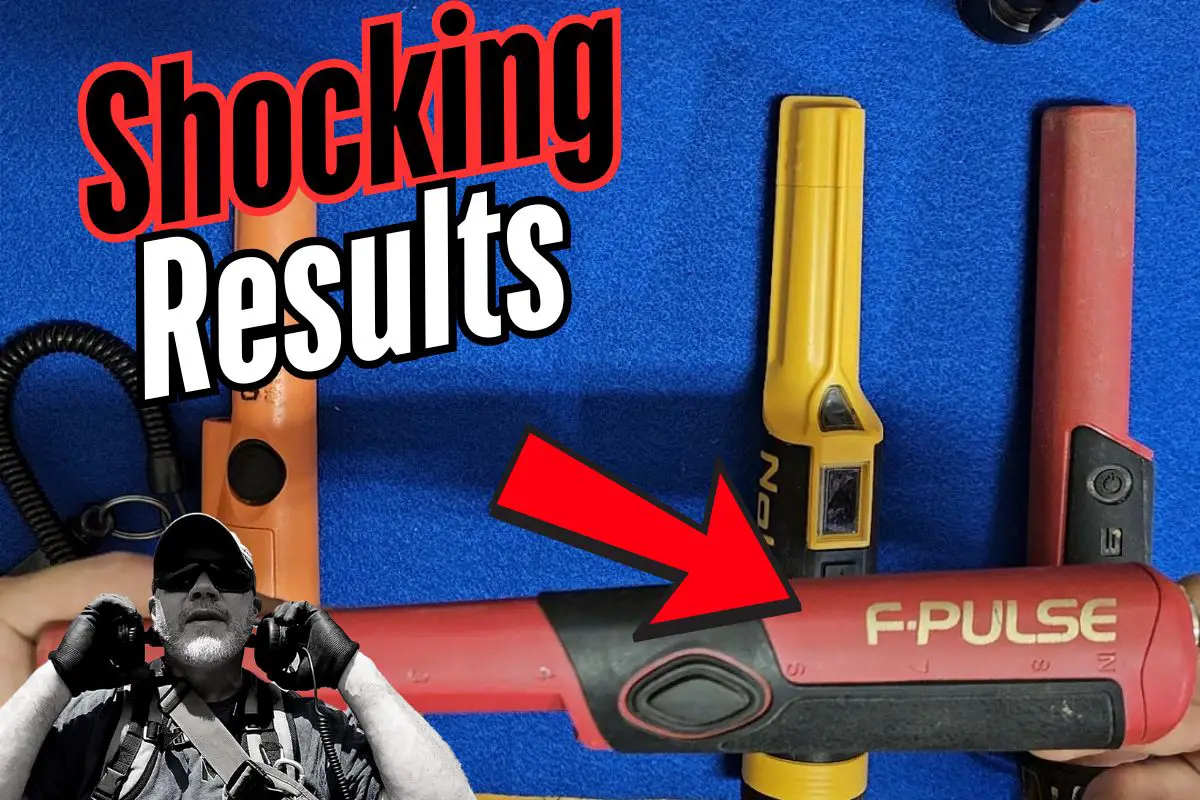Introduction
In the world of metal detecting, pin-pointers are essential tools for narrowing down the exact location of a target after a detector has done its job. Scott from the Mental Metal Channel recently revisited the Fisher F-Pulse, a pin-pointer that initially underwhelmed him. After tuning it properly, he discovered remarkable performance improvements, prompting a comparison with other popular models: the Garrett Pro Pointer AT, the Nokta AccuPointer, and the XP MI-6. This article delves into his findings, revealing the significant impact of tuning on pin-pointer efficiency.
Why Pin-pointers Matter in Metal Detecting
Pinpointers are handheld devices designed to help metal detectorists precisely locate small metal objects in soil, sand, or other materials. While metal detectors can identify the general area of a target, pinpointers narrow down the search, reducing digging time and minimizing damage to potential finds.
The efficiency of a pinpointer is influenced by several factors:
- Sensitivity: How well it detects small or deeply buried objects.
- Detection Range: The distance from the tip at which it can detect metals.
- Field Usability: How stable and reliable it is in various environments.
The Initial Disappointment with the Fisher F-Pulse
Scott initially shelved the Fisher F-Pulse after a disappointing experience straight out of the box. It felt underwhelming compared to his trusted XP MI-6 and the widely used Garrett Pro Pointer AT. The problem? Factory settings limited the F-Pulse to around 70% sensitivity, severely restricting its detection depth.
This changed when Scott revisited the device, prompted by discussions within his Patreon community. A member named Keith shared impressive results after properly tuning his F-Pulse, which inspired Scott to give it another shot.
The Importance of Tuning Pin-pointers
Tuning is a critical yet often overlooked factor in pinpointer performance. The factory settings are designed for general use, but they may not unlock the device’s full potential. Proper tuning involves:
- Adjusting Sensitivity Settings: Increasing the device’s ability to detect smaller or deeper objects.
- Balancing Stability: Ensuring high sensitivity doesn’t lead to false signals.
- Environmental Calibration: Adapting the device to different soil conditions, especially mineralized soils.
Scott followed tuning instructions from his Patreon members and was astonished by the difference.
The Test Setup
Scott conducted controlled air tests to measure the detection range of each pinpointer. He tested the devices with various metal objects, including:
- Civil War Bullet (58 caliber Minie ball)
- King George Coin
- Mercury Dime
- Shield Nickel & V-Nickel
- Silver Ring
- Memorial Penny
- Drill Bit
The tests involved:
- Setting all devices to maximum sensitivity.
- Using a tape measure to record detection distances.
- Ensuring consistent conditions for each test to maintain accuracy.
Performance Comparison
🔸 Garrett Pro Pointer AT
- Detection Depth: 2–2.5 inches
- Strengths: Loud and reliable, popular in the detecting community
- Limitations: Limited depth compared to competitors after tuning
🔸 Nokta AccuPointer
- Detection Depth: 2–2.75 inches
- Strengths: Highly sensitive with proper tuning, slightly better than the Garrett
- Limitations: Slight inconsistencies with smaller targets
🔸 XP MI-6
- Detection Depth: Around 3 inches
- Strengths: Previously Scott’s favorite due to its consistent performance and reliability
- Limitations: Outperformed in depth by the properly tuned F-Pulse
🔸 Fisher F-Pulse (After Tuning)
- Detection Depth: Up to 5 inches
- Strengths: Exceptional detection range—up to 2.5 inches more than competitors
- Limitations: Extreme sensitivity may cause false signals in real-world conditions; needs field testing to confirm stability
Real-World Usability Concerns
While air tests are great for measuring raw detection capability, real-world conditions are far more complex. Factors such as:
- Mineralized Soils
- High-Iron Environments
- Wet or Salty Grounds
…can all affect performance. Scott plans to test the F-Pulse in Culpeper’s mineral-rich soil, notorious for challenging metal detecting equipment. He’ll also take it to upcoming events like DigStock to evaluate its performance under varied conditions.
Key Takeaways
- Proper Tuning Unlocks Hidden Potential: The F-Pulse, initially unimpressive, became a top performer after tuning.
- Detection Depths Vary Widely: The F-Pulse achieved up to 5 inches, compared to 2–3 inches for others.
- Air Tests vs. Field Tests: Lab performance doesn’t always translate to field success; environmental conditions play a huge role.
- XP MI-6’s Legacy Challenged: Once Scott’s go-to pinpointer, the MI-6 now faces stiff competition.
- Community Knowledge is Invaluable: Patreon members’ experiences led to these new discoveries, highlighting the power of shared expertise.
Final Thoughts
Scott’s journey with the Fisher F-Pulse serves as a reminder: don’t judge a pinpointer solely on out-of-the-box performance. Tuning can reveal capabilities that dramatically enhance metal detecting efficiency. While the F-Pulse shines in controlled tests, its real-world usability remains to be seen. Future field tests will determine if it can truly dethrone the XP MI-6 in challenging environments.
If you’re considering a new pin-pointer, this comparison shows the value of experimentation, tuning, and community insights. Whether you stick with a trusted model or explore new ones like the F-Pulse, the key is understanding how to optimize your tools for the best results.

